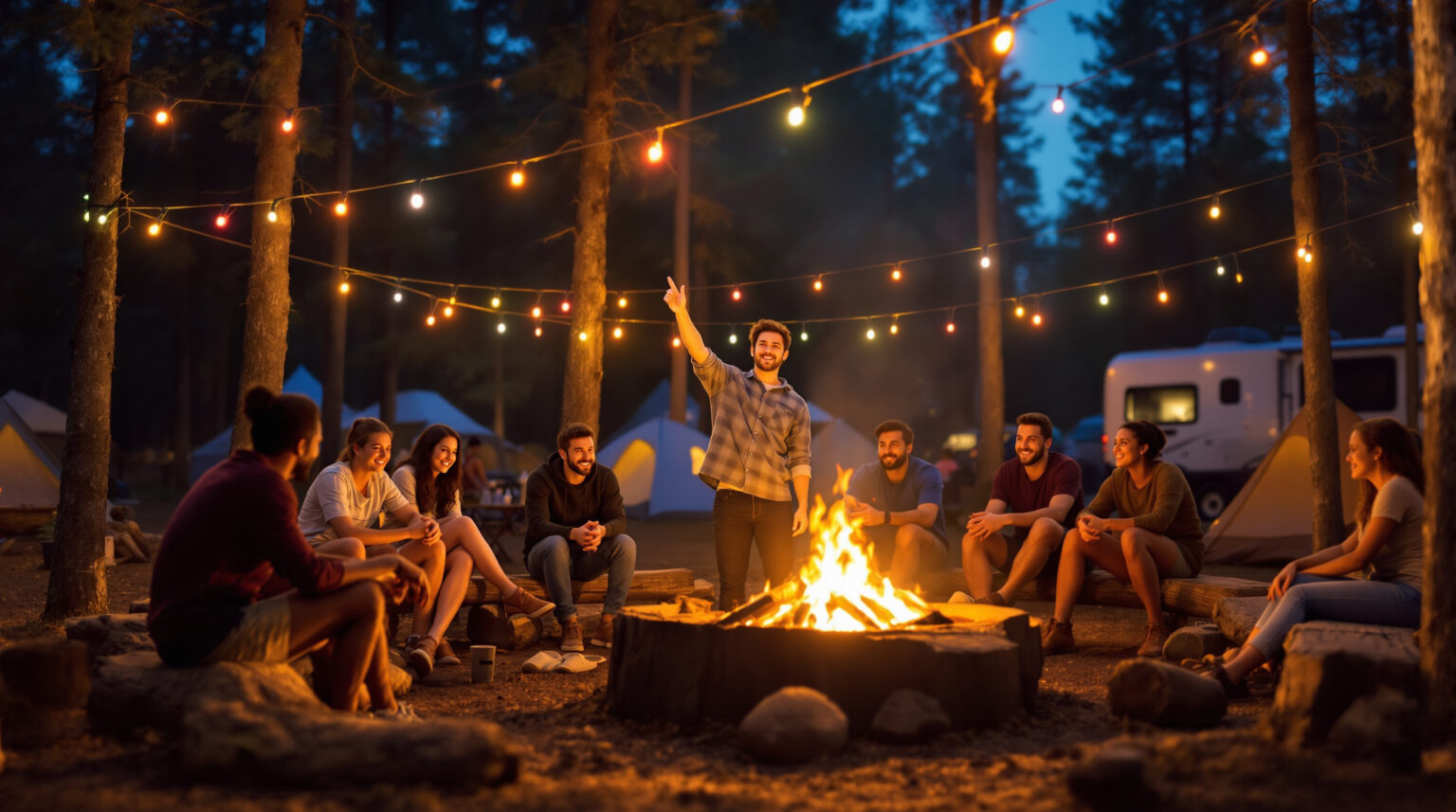Your guests already wave their arms at mosquitoes—what if that same motion could cue the campsite soundtrack, dim the fire-ring lights, or launch a family trivia game on the outdoor screen?
Gesture-controlled entertainment turns everyday movements into share-worthy moments, all while erasing the germ-prone buttons and remotes that cost you cleaning time and replacement fees.
Want campers to linger longer at the communal fire pit? Curious how a touch-free “DJ zone” can boost bar sales and social shares? Ready to wow glampers with tech that feels ripped from tomorrow’s theme parks yet installs in a single afternoon? Keep reading—your next signature amenity could be just a wave away.
Why a Simple Wave Drives Real Revenue
A no-touch light show photographs beautifully, and guests who post those clips do your marketing for you. When the fire-ring lights dim with a palm press or the beat drops after a circular arm motion, every phone comes out, tagging your park and expanding reach far beyond paid ads. Properties that folded gesture control into premium s’mores packages during pilot weekends reported a 14 % bump in ancillary spend and a noticeable uptick in mid-week bookings.
Hygiene benefits add another layer of ROI. Removing communal remotes and sticky wall switches shaved up to 20 % off turnover cleaning time in early trials, freeing staff to tackle higher-value tasks. With fewer high-touch surfaces, operators also reported lower spend on disinfectants and replacement buttons, building a practical business case that resonates with both accountants and health-conscious travelers.
Tech You Can Deploy This Season
The backbone of the open-air DJ booth comes from a real-time gesture audio study that needs only 50–80 training samples. In practice, that means two staffers can spend an afternoon recording waves, circles, and swipes, then map those to volume, tempo, and light cues. By sunset, guests are controlling the playlist with theatrical sweeps that feel almost magical.
For personal zones such as premium domes or individual fire-pits, the Helios 2.0 wearable sensor sips just 6–8 mW of power yet recognizes thumb swipes and finger pinches. Clip-on badges or wristbands let campers dim ring lights or start a camp-trivia round without hunting a phone. Meanwhile, privacy-preserving Gesture modules handle touch-free control of lights and appliances inside glamping tents or shared bathrooms; all processing stays local, so no video data ever leaves the unit—an easy talking point for data-savvy guests.
Building a Rock-Solid Outdoor Setup
Sun, rain, dust, and midnight temperature swings punish electronics, so lean on hardware with at least an IP65 rating. A simple polycarbonate shade over camera lenses cuts midday glare, while vibration-dampening brackets keep recognition steady near boardwalks or generators. Run cabling through UV-resistant conduit; adding a drip loop keeps surprise showers from channeling water into housings.
Network planning is just as critical. Map Wi-Fi or mesh coverage first, aiming for a stable 2–5 Mbps link per camera so firmware updates don’t stall. Where grid power is scarce, pair low-draw sensors with 20–40 W solar trickle panels feeding a small LiFePO4 battery; field tests show three sunless days of uptime. An outdoor-rated PoE switch at each activity cluster delivers both 48 V power and data along a single cable, slashing trenching costs and futureproofing for the next sensor upgrade.
Train the Team, Not Just the Tech
Even the smartest sensor fails if staff ignore maintenance. Draft a two-page SOP that slides into the existing housekeeping binder: daily visual inspection, monthly lens wipe, quarterly firmware check. Keeping the list short prevents skipped steps and empowers seasonal hires who arrive mid-summer.
Train at least two team members per shift on the calibration wave—usually a slow left-to-right motion that realigns the camera after a storm or accidental bump. Log gesture-system status alongside restroom supplies and trash levels so issues surface before guests complain. A laminated quick-fix card at the front desk covers LED indicator meanings and the integrator’s phone number, ensuring nobody fumbles when the amphitheater lights refuse to dim before movie night.
Onboard Guests Before They Unpack
Most campers have never driven a light show with a wave, so frontal signage matters. A waist-high placard or floor decal marks the “sweet spot” where recognition is flawless, and icon-based instructions leap language barriers faster than text. Kids and international travelers learn in seconds, cutting down on confused hand-flailing.
Warm-up emails sent a week before arrival tease the touch-free perk, building anticipation and reducing on-site learning curves. During check-in or the evening orientation, a 30-second demo—raise your hand, volume jumps—cements understanding and sparks hallway chatter. For guests with limited mobility, an optional voice button in the camp app or a loaner remote offers equal access without diluting the futuristic vibe.
Pilot First, Scale Smart
Start where traffic is heaviest: the communal fire ring, amphitheater stage, or sunset deck. A single spotlight zone captures maximum eyeballs for minimal hardware, letting you track dwell time, guest satisfaction, and maintenance savings without a six-figure rollout. Modular mounts ensure underperforming units swap out in minutes, not days, so early missteps don’t become costly regrets.
During the pilot, track three metrics—guest satisfaction score, average dwell time, and cleaning labor on retired wall switches. Blend the feature into a premium upsell such as a “VIP s’mores package” to watch revenue attribution in real time. Budget 10–15 % of initial hardware spend for annual upgrades; the modest refresh keeps the amenity feeling cutting-edge and press-release ready.
Guests remember the moment they lifted an arm and the campground answered. Gesture control is no longer sci-fi; it’s a weekend pilot away—ready to boost bookings, shorten cleaning lists, and turn every campfire into a silent DJ waiting for that first wave.
